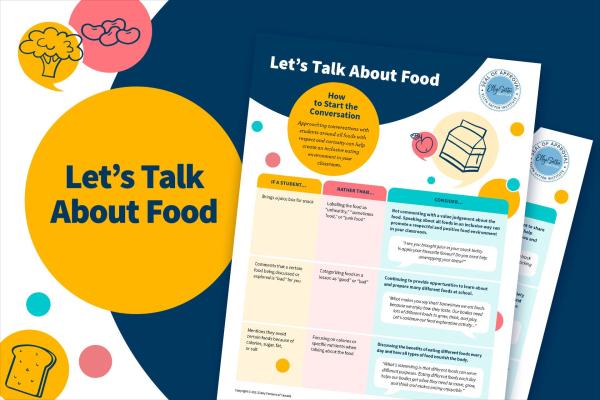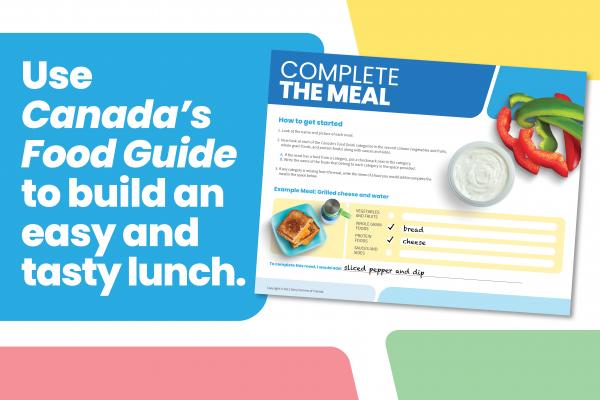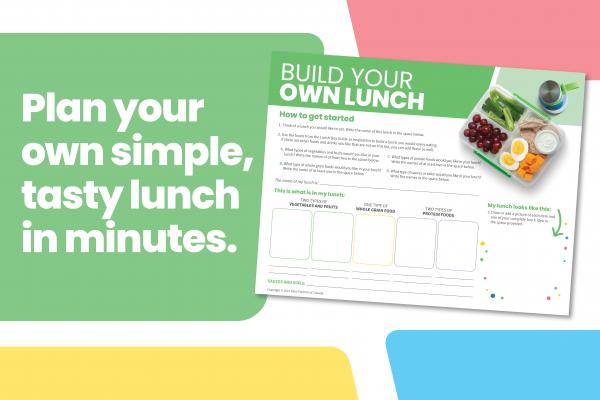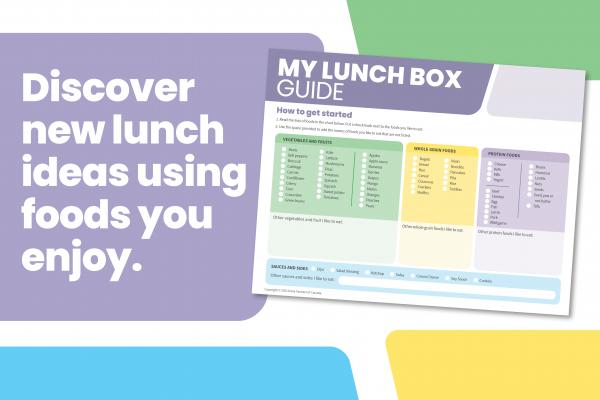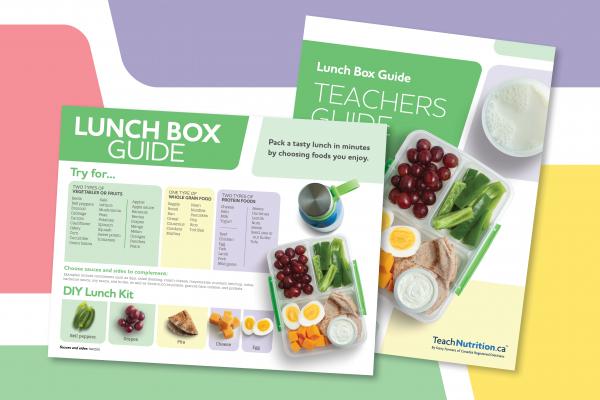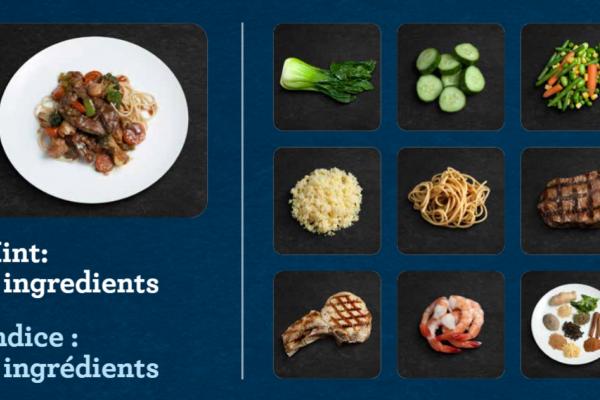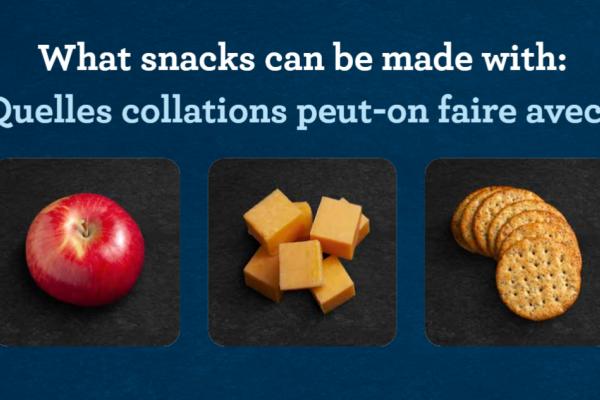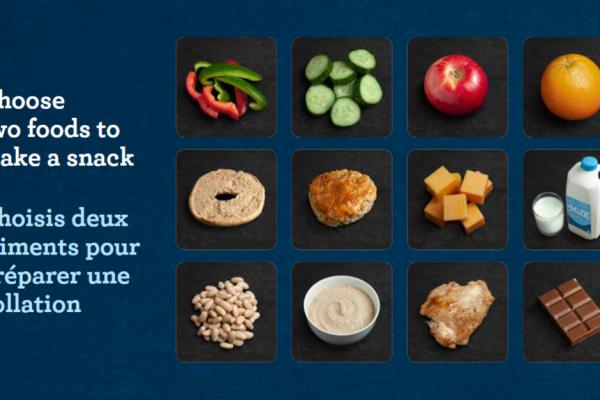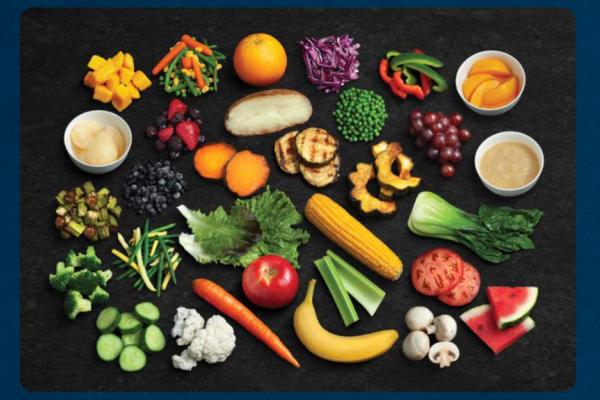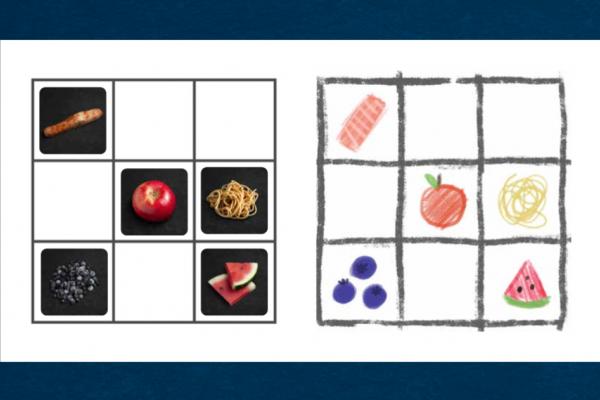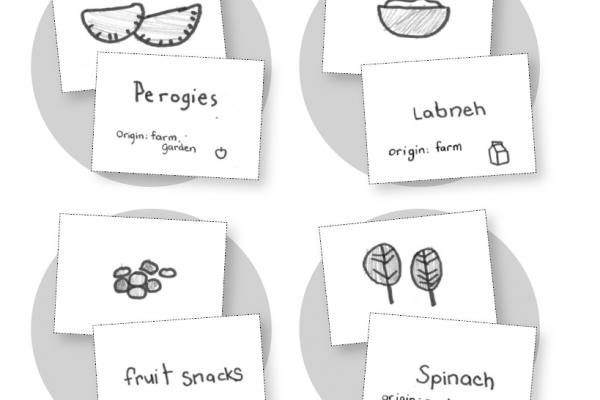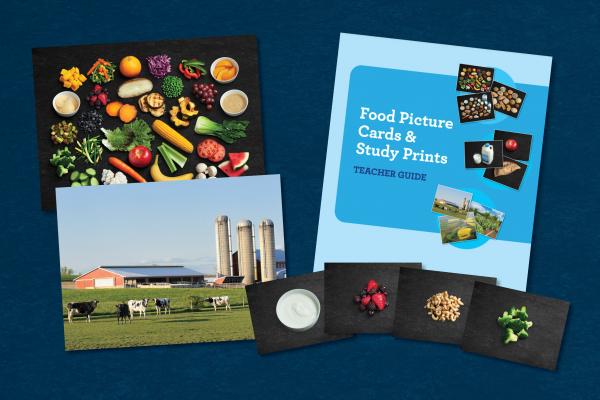Mindfulness and Mindful Eating in the Classroom
These helpful tips will get you started on teaching mindfulness and mindful eating as part of exploring Canada’s Food Guide with your students.

1. What is mindfulness?
You don’t need to be in a quiet yoga studio or listening to an app on your phone to practise mindfulness. Mindfulness is “deliberately paying attention, non-judgmentally, in the present moment.”1 Easier said than done? These four principles may help you and your students get started on practising mindfulness:
- Pressing pause and being present. Mindfulness is an invitation to focus on the present moment. It’s common to notice your mind wandering off to other thoughts. Invite yourself to “press pause” and re-engage with the present moment.2
- Curiosity, not judgement. Instead of trying to get mindfulness “right,” invite yourself to try on the role of a neutral observer, like a child, an alien, or a scientist (or child alien scientist!), and let go of any preconceived expectations in order to be fully present in the situation.2
- Sensing, not slowing. The idea of slowing down is often emphasized in mindfulness, but the real purpose of mindfulness is to allow yourself to notice and engage your senses. While for many people slowing down is what allows this to happen, for some it may not be necessary.2
- Practice, not perfection. Mindfulness is a lifelong learning process. Your needs and capacity change from day to day, so how you practise mindfulness isn’t always the same. Instead of striving for perfection, continue to be curious in your ongoing learning about mindfulness.2
2. How does mindfulness relate to mindful eating?
Did you know that mindfulness ties in directly to exploring Canada’s Food Guide? One eating habit highlighted in CFG is to “be mindful of your eating habits.” Mindful eating draws on several concepts from mindfulness.
The Center for Mindful Eating defines mindful eating as “using all our senses to be present in the entire eating experience, including choosing and preparing food, while acknowledging our inner wisdom and body cues without judgment.”3
Apply the principles from mindfulness to a mindful eating practice by
- Pressing pause and being present. Focus on the entire eating experience, from food selection and preparation to the meal you are eating and the people you are eating with.3
- Being curious, not judgemental. Acknowledge your physical and emotional responses to food, without judgement (e.g., a feeling of fullness or a memory associated with a food).3
- Sensing, not slowing. Try to engage all your senses (sight, smell, taste, touch, hearing) in the entire eating experience.3
- Practising, not aiming for perfection. Understand that mindful eating is not about achieving a particular outcome. Rather, it is an invitation to engage with food and the eating experience in a way that may or may not be different from usual.
2. How do I teach mindful eating to my students?
The table below includes suggestions to explore and practice mindful eating with your students.

4. Will all my students be able to practise mindful eating?
There will be situations in which students may struggle to be present, or have trouble engaging all their senses, such as neurodivergence, disability, trauma, access to resources, or other life circumstances. It is important to avoid framing student responses as incorrect or drawing attention to these differences in ways that could encourage comparison among students. Mindful eating is an invitation to approach the eating experience in ways that students perhaps have not done before.
5. Where do I start?
The resource A Guided Discovery of Canada’s Food Guide: Mindful Eating is designed to support students in developing a positive relationship with food, using mindful eating as a tool.
Acknowledgements
We would like to extend a sincere thank you to Vincci Tsui, a Registered Dietitian and the author of The Mindful Eating Workbook: Simple Mindfulness Practices to Nurture a Healthy Relationship with Food for her support and guidance.
References
- The Center for Mindful Eating. [n.d.] The principles of mindful eating. www.thecenterformindfuleating.org. Accessed Mar. 29, 2021.
- Tsui V. The mindful eating workbook: simple mindfulness practices to nurture a healthy relationship with food. Emeryville, CA: Althea Press. 2018.
- The Center for Mindful Eating. [n.d.] Introduction to mindful eating. www.thecenterformindfuleating.org. Accessed May 6, 2021.


